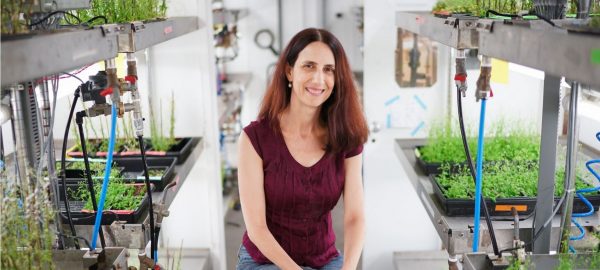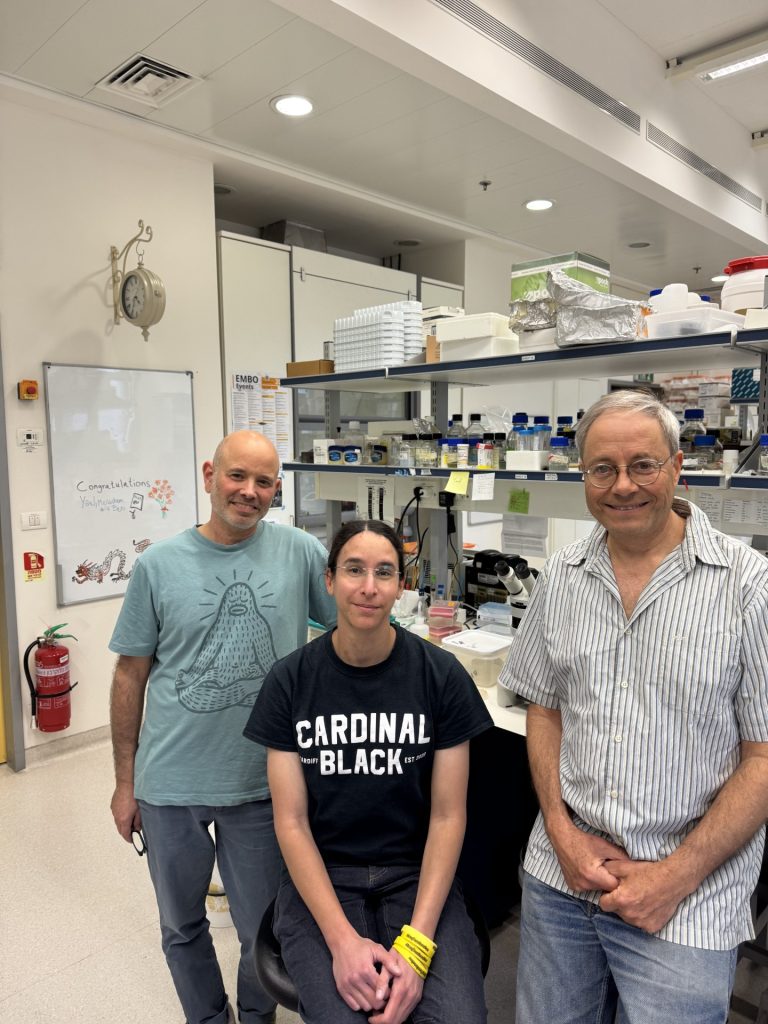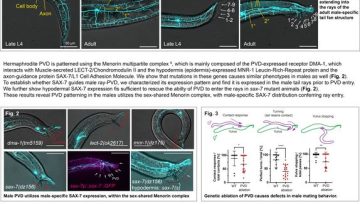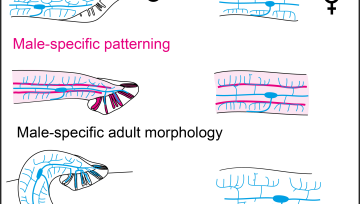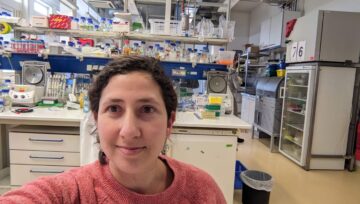On the occasion of the win, we asked Yael to provide us with some interesting details about the study and the path that led to the current research.
Hi Yael. For those of us who don’t know you as well, tell us briefly about yourself in two sentences:
During my undergraduate studies in the Faculty, I became interested in developmental biology – how do cells, tissues, organs, and entire systems find their final shape and work in synchrony with other systems. Ever since I joined the Podbilewicz Lab, I found the PVD neuron structure beautiful and fascinating, and studied its shaping during my MSc and PhD.
What is the general focus of the Podbilewicz Lab?
The Podbilewicz Lab focuses on developmental cell-to-cell fusion. Since this is a key process in multiple critical events such as fertilization, skeletal muscle formation and bone development, the lab employs a variety of model systems, ranging from C. elegans nematodes to cell cultures, mouse gametes and (occasionally) even archaea.
Tell us about the current article: what was the main research question, what did you discover, and what was exciting or surprising in the process?
This research began by the unexpected discovery that the PVD sensory neuron in C. elegans assumes a male-specific dendritic structure. This unique morphology was previously missed, since most studies typically focus on hermaphrodite animals. After characterizing this unique morphogenesis, we checked whether PVD mediates different sensory modalities between the sexes, and described a role for PVD in male-specific behavior as well.
What is the significance of the discovery? What future directions or applications could this research lead to? In your opinion, how might it impact the field in the coming years?
This discovery marks a unique example for structural sexual dimorphism in a sensory neuron in C. elegans. Since the system is robust and easy to study, we can directly probe the mechanisms which govern these sex-specific differences, and their consequences for animal behavior. This makes it a useful model for answering other questions concerning sensory differences between the sexes and neuron development in general.
Please name three key tools or skills you gained during your work in the lab.
In the lab we employ a variety of tools and skills, including microscopy techniques, genetics and behavioral scoring. This is in addition to, of course, creativity and critical thinking, which are key to any research.
We’d love to hear about your career aspirations going forward.
To continue studying, learning, and teaching others to the best of my ability, primarily in the fields of neurobiology and/or developmental biology. In the future I aspire to be and belong in a country which values truth, integrity, accountability, critical thinking and empathy.
⬅ Link to the article: https://www.pnas.org/doi/10.1073/pnas.2421376122
⬅ Link to Prof. Beni Podbilewicz page: https://biology.technion.ac.il/en/member/podbilewicz/
⬅ Link to the Podbilewicz Lab website: https://elegansfusion.net.technion.ac.il/





